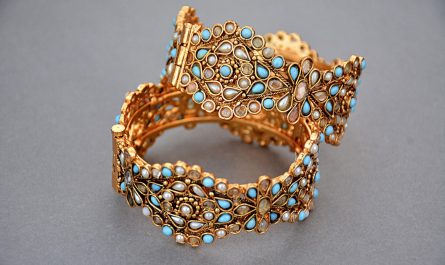The Most Helpful Item For Tattoo Lovers: Tattoo Numbing Cream
What is the need for a numbing cream?
Since, tattooing, or piercing the nose or ears is rather uncomfortable, hence, tattoo numbing cream is frequently used on young children before administering immunizations to them. It also helps the procedure go more smoothly.
Always use numbing cream for skin that has undergone dermatological testing, and be sure to look at the expiration dates, since using untested creams might result in skin allergies and other skin conditions.
Anesthetics, such as numbing creams, are administered to the skin or body to numb a particular area there to lessen discomfort during treatments or procedures. Numbing creams are also known as topical anesthetic creams.
Anesthetic-containing numbing cream can be applied directly to the injured area to reduce painful feelings. When applied before skin treatment, shaving, or tattooing, it deadens the area and provides rapid pain management. They typically assist in reducing pain during injections and minor surgeries during medical and dentistry procedures.
The difference between finishing the tattoo and needing a second or third appointment might be as tiny as a few drops of numbing lotion. Apply the numbing lotion directly to the region if you know the tattoo will be placed on a delicate location, such as the wrist.
Application of tattoo numbing cream
Not all tattoo artists advise using numbing cream since they occasionally have adverse effects on both the skin and the tattoo. Therefore, always check your tattoo artist before using a numbing cream. If the cream creates any problems with the skin, never ignore them and go to a dermatologist or other skin specialist as soon as you can. Applying the numbing cream at the right time is crucial since doing it improperly or at the wrong time might result in negative effects.
The tattoo numbing balm does its magic after about an hour. As a result, you should consider how close to an hour it will be before you inject yourself. If you anticipate a lengthy practice, it can be best to use the tattoo numbing cream while you are waiting at the tattoo parlor rather than at home. Keep in mind that the tattoo artist may need extra time to plan and design before actual tattooing.
Tattooing may be extremely painful on some parts of the body more than others. While tattoo numbing cream won’t fully eliminate the pain, it will help to minimize it and make the tattoo session much more pleasurable, particularly at the beginning of a drawn-out tattooing procedure.
A doctor will typically provide you medicine for the anesthetic cream itself before your appointment. Follow the rules at all times. Before receiving a drip or having your blood drawn, apply the numbing lotion at least an hour beforehand. If you are having a partial procedure, the doctor could advise applying the cream more than an hour beforehand.
Before applying any extra lotion, speak with your doctor if the therapy has been delayed and the numbing cream’s freezing effects have worn off. Applying the recommended amount of numbing lotion or the amount prescribed by the doctor can help you have a less painful procedure with no negative side effects.
Do tattoo artists suggest numbing cream?
It may hurt to have a tattoo, but since everyone has a different threshold for pain, it can be impossible to predict how unpleasant the tattoo will be.
Typically, fleshy bodily parts like the exterior of the thigh react to pain less visibly. The ribs and other skeletal body parts are more delicate. Think about the placement of the tattoo before getting one. Do some thorough research on the tattoo artist and design. It’s important to plan and choose whether to use tattoo numbing cream or not because tattoos take a lot of time to complete.
Each person has a unique bodily structure, which influences how well they can tolerate pain. While getting a tattoo, some people can tolerate the discomfort without any problems, while others have side effects including rashes and excruciating agony.
When getting a tattoo, the individual may experience some discomfort in the region being inked, therefore numbing cream for tattoos is frequently used to lessen the intensity of the pain. Despite their enormous popularity, tattoos and body piercings are unhealthy. It’s crucial to comprehend all of the advantages and disadvantages of these procedures before deciding to alter your physique.
It’s up to you if you want to use a numbing lotion on your tattoo. While some individuals believe getting a tattoo to be unpleasant, others think it would be comfortable. Depending on your tolerance for discomfort and your body’s needs, you must pick the right choice. Some people cannot get a tattoo without numbing cream because they have a lower pain threshold.
Are dermatologically approved?
Usually, tattoo numbing cream is secure. The directions on the cream package, however, must be rigorously followed. Although tattoo numbing cream may be safe when used as directed by a dermatologist or qualified tattoo artist, it can have severe negative consequences over time.
Additionally, some lotions include preservatives and substances that may cause a negative reaction. Make sure you are not susceptible to these lotions by carefully reading the ingredients list. Choose an organic cream with the fewest ingredients possible if you have sensitive skin.
The main bioactive ingredient in most numbing lotions is lidocaine. The amount of the active ingredient in prescription lidocaine solutions is 5%, compared to a much smaller amount in over-the-counter alternatives. It’s normal to expect mild side effects, such as changes in skin tone, itchiness, a rash, or mild blistering. However, you might get more serious side effects (such as a burning, itchy, or uncomfortable sensation) or an inflammatory reaction. To avoid them, familiarize yourself with the warning signals.
Use no more of this medication than is necessary to completely freeze the skin. Don’t use excessive amounts of numbing cream or bandage the damaged areas of skin without consulting a doctor. More topical medication can be absorbed by damaged or irritated skin than by clean skin.



